The Pomsky Dog
With their cute little faces and perpetual husky puppy look, Pomskies certainly don't go unnoticed! Let's take a look at this unusual breed that we're so crazy about.
The funny story of Pomsky
Pomsky is an incredible new internet phenomenon that emerged in the USA in 2011, before the breed even really existed!
It all started with this photo that went viral on the Internet, claiming to be a Pomsky (a Husky/Pomeranian cross): a husky puppy that would never grow up (implying that the photo showed an adult dog).
In reality, the photo was of a Finnish Lapphund puppy named Tequila.
What's most fascinating about the Pomsky is that it almost instantly became one of the most popular and sought-after breeds in the world... and it didn't even exist!
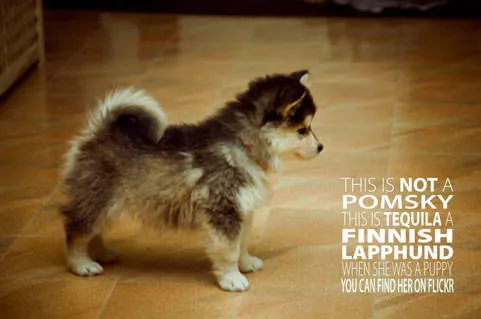
Since viral photos claimed that the "Pomsky" was a cross between the Siberian Husky and the Pomeranian, American breeders began artificially inseminating their Huskies with Pomeranian semen in the hope of making the famous Pomsky a reality!
At the time, only a handful of breeders in the world were attempting to create the 'Pomsky virus'. What they discovered, however, was that crossing a Siberian Husky with a Pomeranian VERY RARELY resulted in a puppy that looked like the 'real' viral Pomsky in the photo! The vast majority of the time, the puppies looked like a giant Pomeranian rather than a little Husky. There was a huge inconsistency in sizes. And there was also a huge variation in appearance and temperament. So when buyers bought a puppy, there was little way of knowing exactly how that puppy would turn out - it probably wouldn't look anything like the true viral type of Pomsky!
And 10 years later...
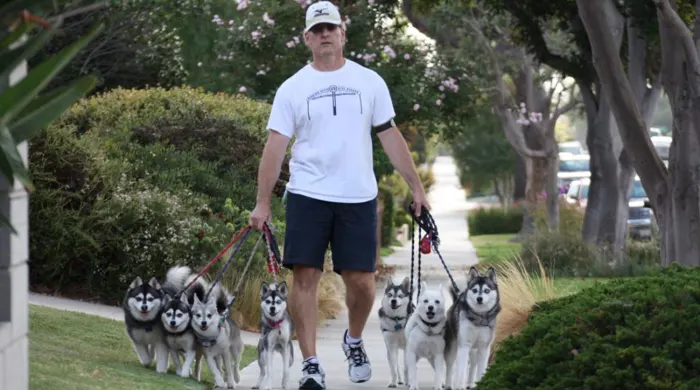
The extraordinary work of the first American breeders, who carefully kept generation after generation of pomskies as close as possible to their ideal standard, i.e. a husky look, a miniaturised size and a rather spitz-like temperament, is finally paying off, and our magnificent Envol Pomskys are the worthy representatives!
Originally, Pomsky puppies were produced by crossing a female Husky and a male Spitz through artificial insemination. Today, most serious breeders work at least with 2nd or 3rd generation Huskies (called F2s and F3s), which produce puppies that are much more homogenous in terms of morphology, size and character.
Terminology
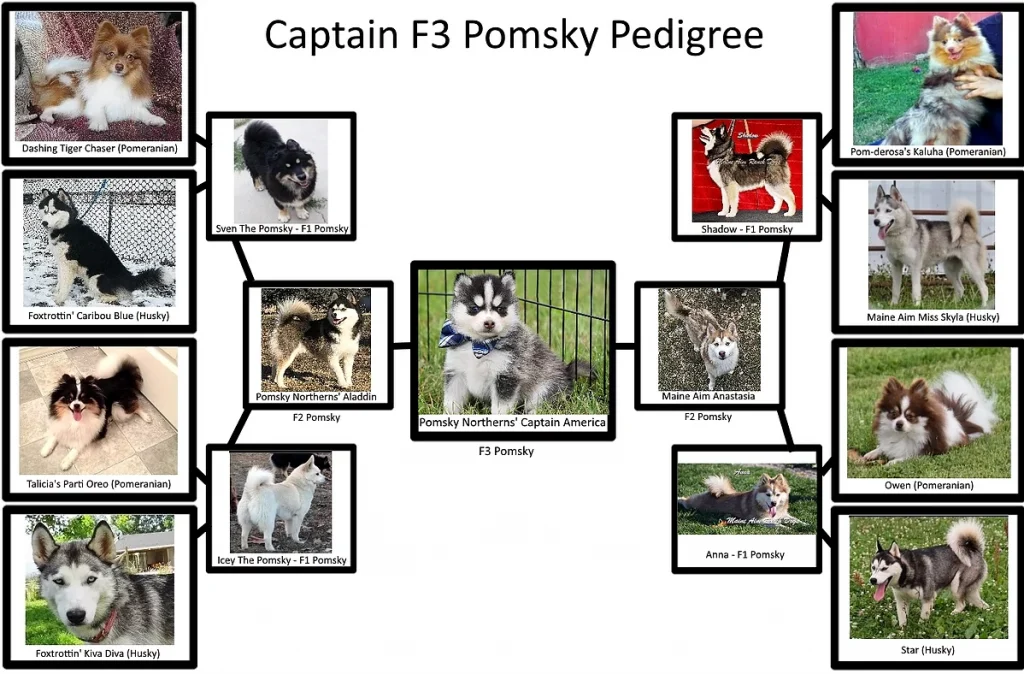
F1: Initial cross, the first generation or first filiation of pomsky: cross between a Husky female and a Pomeranian male. This is the most random cross in terms of results, with large differences between the different puppies in the same litter, and morphologies and characteristics that are sometimes very far from the desired standard.
F2: Crossing of two F1 Pomskys, which are carefully selected and begin to give more homogenous results, but sometimes with isolated "accidents" which must then be eliminated from reproduction.
F3: Crossing of two Pomsky F2: it is from these generations that we work at Envol Pomsky, the sizes, types and characters are much more fixed.
F4: Crossing between two F3 pomskys
F5: from this generation onwards, we no longer count in numbers, the Pomsky is considered to be genetically stable. All breeders should aim for this ideal if we hope one day to see the Pomsky officially recognised as a dog breed.
Pomsky standard

There are 3 different sizes of pomsky :
- the toy Up to 26 cm long and weighing a maximum of 5 kgs, this micro often has a morphotype very close to that of a spitz. In fact, it looks like a spitz with husky markings.
- the miniature The Lily can be up to 36 cm long and weigh up to 9 kg. So our Lily is a miniature pomsky.
- the switchboard Up to 42 cm and 12 kgs, like Captain and Night. This is our favourite size here, and for us it's the ideal size!
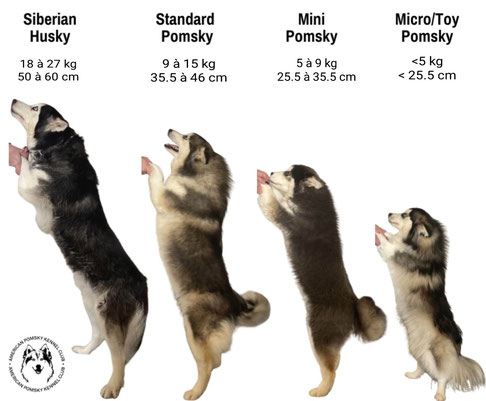
The Pomsky belongs to group 5: Spitz-type and primitive-type dogs. C'is an elegant and well-balanced Proportionate, medium to small in size. Its muscles are firm and Well developed, not overweight. The bone structure is moderate and proportional to its size. Its body is covered with a good coat. The Pomsky is easy and free to move, with no discomfort to the body. joints. This is a graceful dog, light in its movements. travel. His ears should be straight, pointed and turned forward. Its bushy or bushy brush tail (depending on the type of hair) is a real eye-catcher. usually worn rolled over the back or upright. He has a frank and self-confident look.
SIGNIFICANT PROPORTIONS From the point of the shoulder to the point of the buttock, the body is slightly longer than the buttock. height at withers. The distances from the nose to the stop and from the stop to the occiput are equal or almost equal.
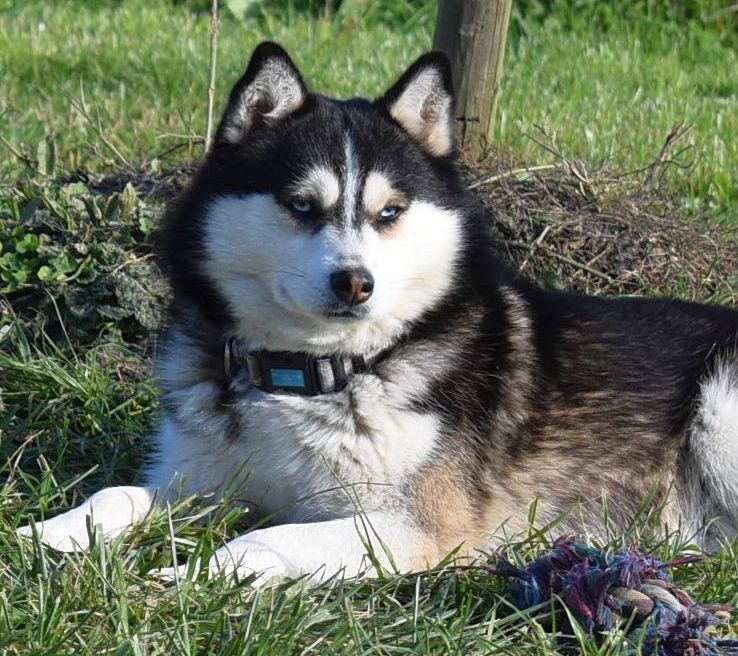
The pomsky's temperament
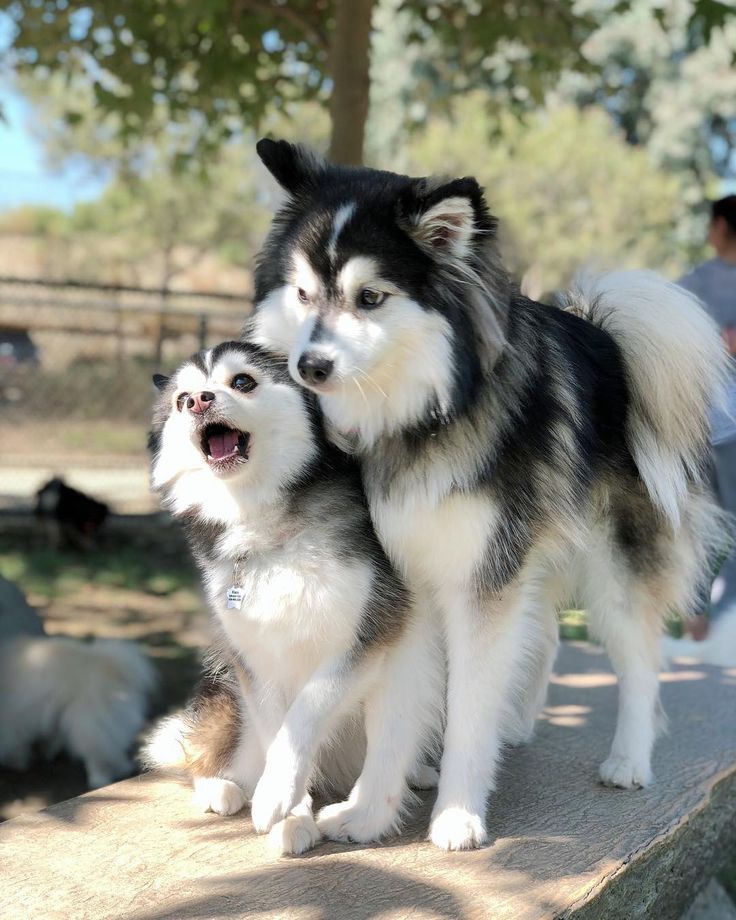
On the other hand, he's a dog that needs to be exercised with real outings. on a daily basis, You really need to be aware that a little pee in the morning and in the evening is clearly not enough, or that just because you have a garden he's out on his own...
The vast majority of behavioural problems in pomskies stem from the absence or inadequacy of real outings where the dog can really let off steam. This means having places close to home where you can let him loose, training him to recall, and of course having time every day for these outings.

And in a flat?
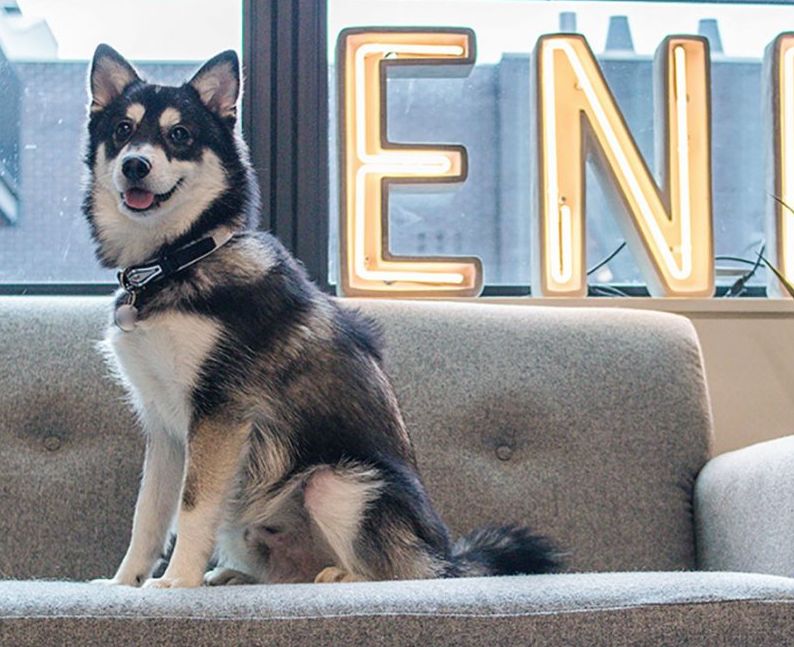
Contrary to what you might think, a flat is perfectly suitable for a pomsky, as long as you can take him out at least 3-4 times a day, including 1 real active outing as explained above.
What's more, your dog will be much happier in a flat with involved, active owners than all day on his own in his big garden.
The pomsky's greatest misfortune is the absence of its owners and the lack of outings. But couldn't this description apply to all dogs?
Interested in adopting a Pomsky puppy?
Come and see if we have any puppies available at the moment.